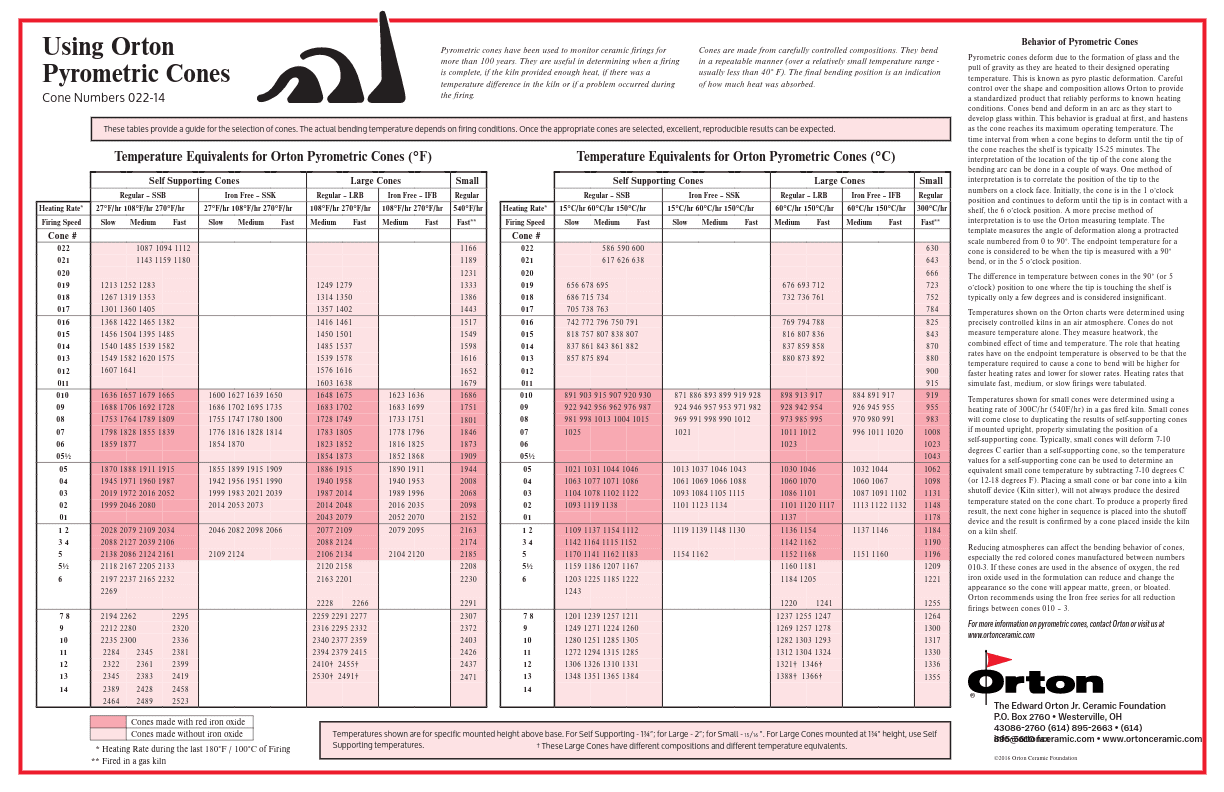Ceramic Cones: “Heatwork”
In the world of ceramics, the term “heatwork” is often used to describe the process of firing clay and glazes in kilns. However, as any experienced potter or ceramic artist will tell you, this term doesn’t quite capture the complexity of what’s happening during the firing process. Let’s delve deeper into the science behind ceramic cones and explore why “heatwork” might not be the most accurate way to describe it.
At first glance, a ceramic cone chart might seem like a simple guide to firing temperatures. Each cone is associated with a range of temperatures, indicating when specific chemical reactions occur within the clay and glazes. But to truly understand what’s happening, we need to shift our focus from simply applying heat to triggering and completing chemical reactions at the molecular level.
When we fire ceramics, whether it’s clay bodies or glazes, we’re initiating a series of complex chemical transformations. These reactions are essential for achieving the desired properties in the final ceramic piece, such as strength, color, and texture. However, these reactions don’t all occur at once or at the same rate.
This is where ceramic cones come into play. Each cone represents a range of temperatures at which certain reactions can occur. The multiple temperatures listed for a single cone reflect the different speeds at which these reactions can progress. It’s not just about heating the materials; it’s about carefully controlling the temperature to facilitate the necessary chemical changes.
For example, consider the process of glaze maturation. A glaze may contain various compounds that melt and flow together to create a smooth, glassy surface. However, this transformation doesn’t happen instantaneously when the glaze reaches a certain temperature. Instead, it occurs over a range of temperatures as different components of the glaze melt and interact with one another.
Similarly, the firing of clay bodies involves a series of reactions, including the decomposition of organic materials, the formation of new minerals, and the consolidation of the clay particles. Each of these reactions occurs within a specific temperature range, and the goal is to progress through these ranges at the optimal rate to achieve the desired properties in the finished piece.
So why does the term “heatwork” fall short when describing this process? Well, for starters, it puts too much emphasis on the heating aspect of firing. While temperature certainly plays a crucial role, it’s just one piece of the puzzle. What’s more important is understanding the chemical reactions taking place and how they are influenced by temperature, time, and atmosphere in the kiln.
Perhaps a more accurate term would be “reaction range.” This term better reflects the fact that firing ceramics is not just about applying heat but about guiding a series of chemical reactions to their desired endpoints. It acknowledges the complexity of the firing process and highlights the importance of understanding the underlying chemistry.
So to sum up, ceramic cones serve as invaluable tools for ceramic artists, providing guidance on the temperatures at which specific chemical reactions occur during firing. While the term “heatwork” may have its place in the lexicon of ceramics, it doesn’t fully capture the nuanced chemistry behind the firing process. By shifting our focus to the concept of “reaction range,” we gain a deeper appreciation for the intricate dance of molecules that transforms raw materials into beautiful works of art.
With this knowledge and testing, you can make informed choices about your kiln firings to make your studio and work the best that it can be. But this is just the beginning! Remember, precision and understanding pave the way to artistic excellence.
Have a few minutes? Check out our Ceramic Cone Shorts on our YouTube channel here. Make sure that you subscribe to be notified when we add new content.
If you haven’t already, join our community! Learn more by exploring our online courses and workshops, follow us on Social Media @ceramicmaterialsworkshop or sign up for our Newsletter.
Together, we can build a community of informed and empowered ceramic makers who value quality and craftsmanship.
-The CMW Team

